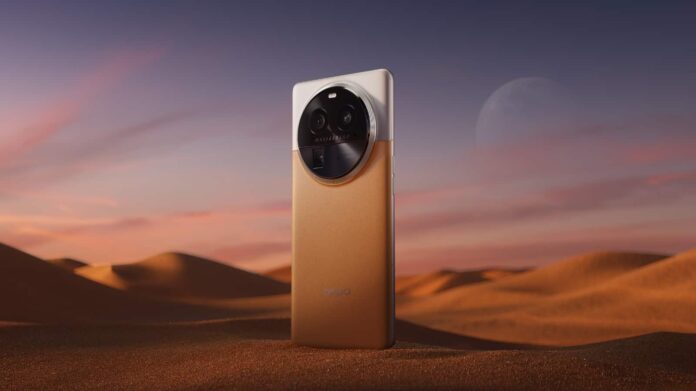[ad_1]
OPPO has just announced its new Find X6 series of flagship phones. It consists of the OPPO Find X6 and Find X6 Pro, though the ‘Pro’ model steals the show here, of course. It is a phone with more powerful specs, and a 1-inch camera sensor. That is the variant we’ll focus on here.
Before we begin, do note that the two phones got announced in China only. The last time I talked to OPPO, the company did not have any plans for a global launch, at least not for the ‘Pro’ model. We’ll see if that will change moving forward.
The OPPO Find X6 Pro is finally official with an immensely powerful camera hardware
The OPPO Find X6 Pro has a large circular camera island on the back, which protrudes quite a bit. The device is made out of metal and glass, though there is a variant that combines glass with vegan leather on the back (brown + white).
A centered display camera hole can be found on the front of the phone. Speaking of which, that display is curved towards the sides, and the back side also curves into the frame. The power/lock button sits on the right side, while the separate volume up and down buttons are located on the left.
Let’s talk about the cameras here, first, as that is what OPPO focused on the most in its press materials. There are three cameras included on the back of the phone. OPPO says that it approached developing this phone with a philosophy all three are main cameras, in a way. It wanted all three cameras to be equally useful.
A 1-inch camera sensor is included here, and Hasselblad helped optimize these cameras
The main camera does stand out, spec-wise. OPPO is using Sony’s IMX989 sensor here, which is a 1-inch camera sensor used in the Xiaomi 13 Pro and Vivo X90 Pro. That 50-megapixel camera has a 3.2um post-binning pixel size, f/1.8 aperture, 23mm focal length, OIS support, and a 1G+7P lens.

The 50-megapixel ultrawide camera utilizes Sony’s IMX890 sensor. It has a 2um post-binning pixel size, f/2.2 aperture, 15mm focal length, macro mode, and a 7P lens. The third camera is a 50-megapixel periscope telephoto unit (Sony’s IMX890 sensor, 2um post-binning pixel size, f/2.6 aperture, 3x optical zoom, 65mm focal length, OIS). The MariSilicon X imaging NPU is also a part of the package here. Hasselblad helped tune these cameras, while you’ll also notice the company’s logo on the back.
A single 32-megapixel selfie camera (Sony’s IMX709 sensor) can be found on the front side of the device. That camera also comes with a 7P lens module.
This is the brightest display in any phone to date
There is a 6.82-inch QHD+ (3168 x 1440) LTPO AMOLED display included on the front. That display has a 120Hz refresh rate (adaptive), and it’s protected by the Gorilla Glass Victus 2. It gets up to 2,500 nits of peak brightness, which is a new record.
The phone is fueled by the Snapdragon 8 Gen 2 SoC. OPPO included 12GB or 16GB of LPDDR5X RAM here, depending on the model you get. The 12GB RAM model includes 256GB of UFS 4.0 flash storage, while the 16GB RAM model comes in both 256GB and 512GB UFS 4.0 storage options.
100W wired & 50W wireless charging is included here
There are two SIM card slots included in the phone, while the device comes with Bluetooth 5.3 support. A 5,000mAh battery can be found on the inside, while the phone supports 100W wired charging, and 50W wireless charging. 10W reverse wireless charging is also supported. Do note that a 100W charger is also included in the package. Android 13 comes pre-installed, with OPPO’s ColorOS 13.1.
There are, of course, two speakers included on the device too. The OPPO Find X6 Pro measures 164.8 x 76.3 x 9.1mm (glass model), and the glass + vegan leather model is a bit thicker at 9.5mm. Speaking of which, the glass model comes in black and green options, while the glass + leather model combines brown and white colors on the back.
We still don’t know the phone’s price, but we’ll update this article later today, as soon as OPPO announces the pricing.
[ad_2]
Source link
